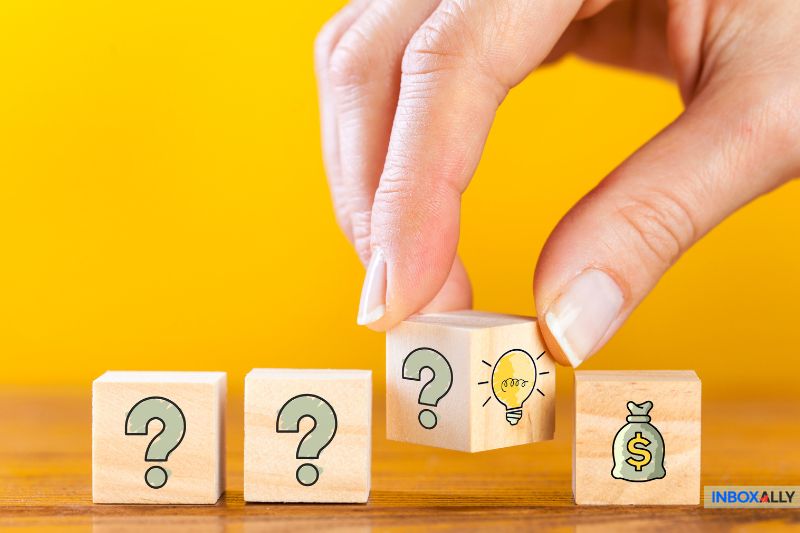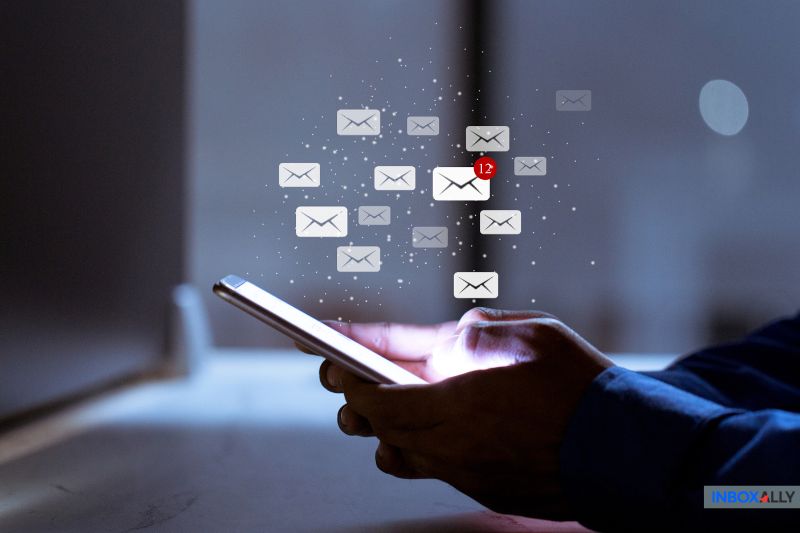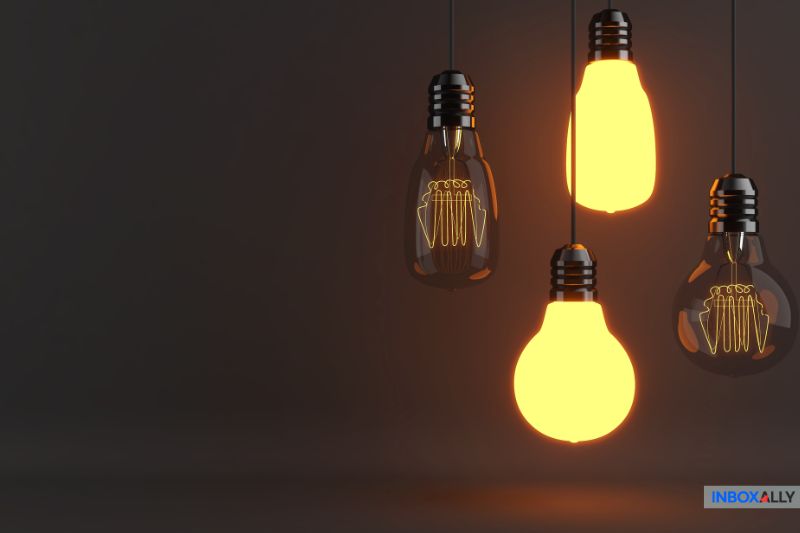You’ve heard it before – “Email is dead.” Yet, here we are, and the numbers tell a very different story. Email marketing continues to deliver an ROI of $36 for every $1 spent. No flashy ad campaigns. No fighting algorithms. Just direct, focused communication with people who want to hear from you.
But here’s the catch: it’s not enough to collect email addresses like baseball cards. The real power lies in nurturing those subscribers and turning them into customers who click “buy” – and keep coming back.
So, how do you build a list that works for you? And how do you send emails that people open, click, and act on? This article will explain all that—and much more. Stick around!
Build a List That Wants to Hear From You
![]()
Here’s the truth: bought email lists are a bad idea. They’re filled with people who didn’t ask to hear from you and don’t care what you’re selling. At best, they’ll ignore your emails. At worst, they’ll mark you as spam and tank your sender reputation.
Build your list the right way – a list full of people who want to hear from you. Start with a compelling opt-in offer. Forget generic “Join our list” CTAs – no one cares about that. Instead, offer something in return:
- “Download our free project management template.”
- “Get 20% off your first order when you sign up.”
The secret to a good email lead generation strategy is to give value upfront. Whether it’s an eBook, a discount, or exclusive content, people need a good reason to hand over their email address.
Next, make signing up easy and impossible to miss. Use tools like pop-up forms that trigger at the right time (exit-intent, scroll-triggered). Gamify it with quizzes or spin-to-win scratchcards that are both fun and effective. Platforms like Adact and OptinMonster let you add these without coding headaches.
A great example could be a fitness app offering a short “What’s your perfect workout?” quiz, followed by personalized recommendations delivered straight to their inbox. It’s interactive, valuable, and converts like crazy.
Bottom line: stop emailing people who aren’t listening. Focus on building a list of engaged, interested subscribers. The quality of your list will make or break your email lead generation efforts. Get this right, and you’re off to a great start.
Your First Email Sets the Tone – Don’t Blow It
Your welcome email isn’t just a formality—it’s an opportunity to show subscribers they made the right choice by joining your list. If it feels uninspired, they may tune you out early, but when it’s done well, it can open the door to a lasting relationship.
A good subject line makes all the difference. Simple, intriguing, and friendly phrases work best. Instead of a dull “Welcome to our newsletter,” something like “Here’s your free guide – let’s get started!” or “You’re in! Here’s what’s next.” sounds more human and relevant.
The email itself works better when it feels warm, personal, and valuable. Imagine you’re greeting someone face-to-face. Thank them for signing up, set expectations for what’s coming, and give them something useful right away. If they opted in for a guide, discount, or webinar, deliver it immediately.
Focus on them, not you. A quick line introducing your brand is fine, but there’s no need for a five-paragraph history lesson. Instead, answer the question, “What’s in it for me?” Let them know how you’ll help solve their problems or share valuable content.
A clear call to action helps keep the momentum going. For example:
- “Check out this quick 3-minute guide to get started.”
- “Grab your 20% discount here.”
A well-crafted welcome email feels like a gift, not a pitch. It’s personal, relevant, and sets the tone for future interactions. Show your readers you’re worth their time – because if you don’t, they won’t stick around.
Gamify and Give Back: Why People Love Winning (and Free Stuff)
Gamification might sound like a buzzword, but when done right, it’s one of the smartest ways to generate email leads. Why? People love to win! Whether it’s a small prize or a simple sense of accomplishment, gamifying your opt-ins turns email marketing lead generation
into something engaging – even fun.
Start with interactive marketing campaigns like scratchcards, spin-to-win wheels, or quizzes. Use OptinMonster or Adact to make these easy to set up. The secret is to offer something people actually want in exchange for their email addresses. No random iPads or unrelated freebies – the prize must align with your product or service.
For example:
- A beauty brand might use a “Spin to Win” campaign where subscribers can win a small discount or free product sample.
- A fitness app could offer a “Find Your Perfect Workout” quiz, with tailored recommendations sent straight to their inbox.
Contests and giveaways are another way to gamify lead generation. The trick, again, is making it relevant. If you sell kitchen tools, don’t give away a tablet. A high-end blender or a set of premium cookware makes much more sense. This attracts people genuinely interested in your products – not just freebie hunters.
Companies using gamification often see massive boosts in sign-ups. In 2011, Verizon Wireless gamified its website, resulting in over 50% more user engagement. People love to play, compete, and win. Done thoughtfully, gamification turns passive visitors into eager subscribers.
Segmentation: Not Everyone Wants the Same Thing
Segmentation is the backbone of a successful email marketing strategy. If you’re still blasting the same email to your entire list, you’re wasting time and losing leads. Segmentation lets you send emails people actually care about by breaking your list into groups based on their demographics, behavior, or where they are in the buying journey.
A basic segmentation can look like this:
- Demographics: Age, location, or job title.
- Behavior: What links they’ve clicked, what products they’ve browsed, or how engaged they are.
- Stage in the funnel: New sign-ups need education, while qualified leads might need a nudge to buy.
The idea is to go beyond “Hi [First Name].” True personalization delivers tailored content, offers, or product suggestions. For example, an online clothing retailer might segment its list by browsing behavior and send “You’ll love these new arrivals” emails featuring styles similar to what customers viewed.
Email marketing software like Mailchimp, HubSpot, or ActiveCampaign makes segmentation and lead scoring easy by automating the process and allowing you to set triggers. To keep your emails out of spam, use InboxAlly to simulate real engagement, boost deliverability, and get your messages seen where it matters most.
The end result is better open rates, better click-through rates, and happier subscribers. Why? Because instead of receiving irrelevant noise, they’re getting content that speaks directly to their needs. Segmentation makes your emails feel less like mass marketing and more like a personalized experience – the kind that leads to conversions.
The Follow-Up: Don’t Sell, Solve Problems
If your follow-up emails are nothing but sales pitches, you’re doing it wrong. People don’t sign up to be sold to—they sign up because they believe you can help them. Lead nurturing emails that convert focus on solving problems first and selling second.
Start with a sequence that educates, entertains, and builds trust. For example:
- Email 1: Share a quick win—a tip, resource, or insight they can use immediately.
- Email 2: Tell a story. A customer success example or how someone overcame a problem they might relate to.
- Email 3: Introduce your product or service as the logical solution, subtly guiding them toward action.
Every email in the sequence should answer one question: “What’s in it for me?” Make it about their pain points, their goals, and how you’re helping them get closer to what they want.
Bombarding potential customers with constant “BUY NOW” messages does nothing but kill trust. It tells them you care more about the sale than their needs. Instead, think of your emails as a way to build a relationship. Be useful. Share relevant guides, answer common questions, and position yourself as someone who understands their challenges.
When you focus on solving problems, you earn credibility. And when it’s time for your pitch—whether it’s a limited-time offer or a gentle CTA—your leads will already see you as the solution they’ve been waiting for.
If you’re serious about email lead generation, InboxAlly will make sure your emails make it to your subscribers’ inboxes every time. Check it out and see the difference yourself!
From Subject Line to CTA: The Art of Getting the Click
Every email you send lives or dies by a simple chain of events: open, read, click. If one link breaks, the email fails. To get the click, you need to master three key elements: subject lines, content, and CTAs.
Subject lines are your first impression. Be intriguing, but avoid spammy tactics. No one’s clicking on “HUGE SALE – ACT NOW!” Write subject lines that spark curiosity or offer clear value:
- “5 tips to cut your project time in half.”
- “Here’s your exclusive 20% discount.”
Next comes the content. Keep it brief, scannable, and laser-focused on your reader’s needs. Break up large blocks of text with short paragraphs, bullet points, and visuals. Readers are busy—help them find what they’re looking for quickly.
The CTA (call-to-action) is where you get the click. Don’t settle for boring, generic CTAs like “Sign up” or “Learn more.” Instead, focus on benefits and action:
- “Download your free strategy guide.”
- “Grab your discount before it’s gone.”
Finally, don’t assume you’ve nailed it on the first try. Use A/B testing to see what works. Test subject lines, button placements, or CTA language. Maybe “Get your free eBook” outperforms “Download now.”
Every click tells you something about what your target audience values. Keep testing, refining, and delivering content that connects. The better your email chain—open, read, click—the closer you’ll get to turning leads into customers.
Clean It Up: The Proper List Hygiene
An email list isn’t “set it and forget it.” Over time, people lose interest, change email addresses, or simply stop engaging. Holding onto inactive subscribers drags down your open rates, skews your metrics, and can even hurt your deliverability.
Think of it this way: a smaller, engaged list is far more valuable than a bloated one full of people who never open your emails. That’s why regular list maintenance is non-negotiable.
Start by identifying inactive subscribers—those who haven’t opened or clicked an email in a while, say three months. But don’t delete them right away! Instead, run a re-engagement campaign:
- Send a “We miss you” email with a compelling offer.
- Ask if they still want to hear from you: “Still interested in our tips? Let us know!”
If they don’t bite, it’s time to say goodbye. Mailchimp, HubSpot, and other tools make this easy with automated workflows for list cleaning.
To keep your list healthy moving forward:
- Regularly review your metrics and prune inactive leads.
- Use a double opt-in form to ensure quality sign-ups from the start.
- Monitor bounce rates and remove invalid emails.
A clean, engaged list isn’t just good for deliverability— it will help you generate leads that convert. Focus on the people who want to hear from you, and you’ll see stronger results with every email you send.
Final Thoughts
Email lead generation isn’t rocket science—it’s about delivering value, respecting your audience’s time, and guiding them toward solutions they actually care about.
Test, refine, and learn from every email you send. A great subject line, a helpful tip, or a well-placed CTA can turn a casual reader into a paying customer. Always focus on making the experience about them.
Run an inbox placement test to check exactly where your emails are landing—whether in the primary inbox, promotions, or spam. This quick step offers valuable insights to fine-tune your strategy and boost engagement
The result will be a list full of engaged subscribers who don’t just hit “buy” once—they stick around, trust your brand, and look forward to hearing from you. Build it right, nurture it well, and watch it grow.
If you’re looking to land in more inboxes and avoid the spam folder, check out InboxAlly—it trains providers to trust you by boosting engagement and inbox placement. Give it a try and watch your emails land where they belong.






